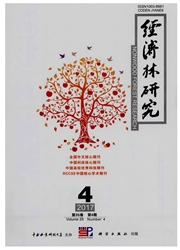

 中文摘要:
中文摘要:
摘要:广东是我国经济林的重要产区,对该省典型经济林经营现状及效益进行分析,可为现行模式的优化及推广提供参考依据。文中选取河源市船塘镇板栗林、梅州市广东新大地生物科技股份有限公司油茶林、揭阳市曲西街道笋用竹林作为研究对象,调查分析了上述3种经济林的经营现状及效益情况。结果表明:(1)3种经济林均为调查地区的林业特色产业,种植面积均较大,都成立了相应的协会进行技术交流和推广,且均和高校、科研机构建立了合作关系;产品加工数量不断递增,初步建立了产、供、销“一条龙”的配套体系;(2)板栗林、油茶林和笋用竹林的产投比分别为5.49、4.11和5.35,其净现值分别达28403、15139和22592元/(hm2·a);(3)3种经济林在生产和产品加工、流通环节上均为当地农民、下岗职工、大中专毕业生提供了就业机会,同时提高了种植户(工人)的生活质量;(4)3种经济林在涵养水源、土壤养分和碳贮存等方面均发挥了积极作用。
 英文摘要:
英文摘要:
Guangdong is an important production area of non-wood forests (NFs) in China. The analysis of management status and benefits of the typical NFs can help optimizing and promoting the current operation mode. The management status and benefits of three typical NFs in Guangdong were investigated and analyzed, including the Castanea mollissima forest in Chuantang of Heyuan City, Camellia oleifera forest of Guangdong Xindadi Biotechnology Co., Ltd in Meizhou City and Dendrocalamus latiflorus forest at Quxi Street of Jieyang City. The results showed that the NFs were special industries with large planting area in the study regions. Cooperation associations were set up and played a positive role in communication and promotion of new technologies. The growers of NFs established cooperative relations with universities and/or research institutions. The products manufactured from NFs were increasing and an initial system of integrating production, supply and marketing was established. The output-input ratios of C. mollissima forest, C. oleifera forest and D. latiflorus forest were 5.49, 4.11 and 5.35, respectively, and the net present values were 28 403, 15 139 and 22 592 Yuan/(hm2"a), respectively. The NFs provided employment opportunities for local farmers, laid-off workers and college graduates in planting, product processing and circulation, and improved the growers' (workers') life quality. The non-wood forests played a positive role in water conservation, soil nutrient, carbon storage, and so on.
 同期刊论文项目
同期刊论文项目
 同项目期刊论文
同项目期刊论文
 期刊信息
期刊信息
